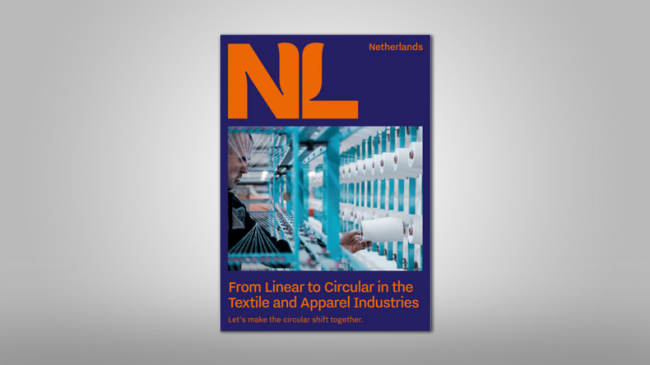

Unwrapping Dutch culture through snacks

The Netherlands is aiming to develop a fully circular economy by 2050. An economy without waste, where everything runs on reusable raw materials. This significantly challenges the textile industry: as this industry is one of the most polluting in the world. Although somes parts of the sector are already committed to circular practices, others have not yet made the transition.
The textile industry is a complex market with many actors and many challenges. With its use of large quantities of water, chemicals and energy, as well as the enormous amount of waste it generates - it is clear that changes need to be made.
Textiles are applied in two main sectors: 1. Textiles for clothing 2. Technical textiles (used in the automotive sector, medical sector, protective clothing, etc.). Clothing accounts for over half of the textiles produced globally. And significant parts of production occur in developing countries, where labour is cheap and the authorities are less strict about environmental and social standards and regulations.
Rigorous changes need to be made to transform the linear textile industry into a circular textile value chain. The textile industry must phase out non-renewable resources and move towards renewable, regenerative inputs. The main principles of circular textiles are based on the circular economy and sustainable development.
Making the transition already starts at the design stage. Instead of designing for aesthetics and the end-price, designers should shift their focus to bear in mind user-needs, function and the end-of-life of the product.
In the early production stages, steps can be made in the circular transition by choosing the right textile fibre. For instance, by shifting from “virgin” fibres made from cotton or petrochemicals to fibres made from recycled plastic bottles or fishing nets. Also, changing the dyeing process, packaging process and means of transportation are necessary to make the circular transition successful.
By collecting, recycling or reusing textiles, the life cycle of clothing and fibres can be extended. The challenge is not only to collect textile waste but also to collect “clean” textile waste that can be recycled at its highest value.
The circular textile shift will be a success if clothing retailers adapt their business models to make the transition. By developing a circular business model, a company can create value by utilising both the economic as well as the resource value retained in products after use. In the end, it will serve as input for the production of new goods.
For more in depth information and examples about how the various stages of the textile industry can be made circular, download “From Linear to Circular in the Textile and Apparel Industries”.
More and more consumers expect brands to have a positive impact on the environment and society.
There is an increased awareness that the global community, especially in western cultures and societies, have lost connection to fashion’s materiality. Most of us have lost touch with how clothing is made, and where the raw materials come from.
We have to make the public aware that a change in the textile industry is needed and consumers should use their voice to move the textile industry in the right direction. More and more shoppers expect brands to have a positive impact on the environment and society.





Want to know more about how you can work together with the Netherlands to achieve your goals? Or how you can help contribute to or spread the word on campaigns, events and initiatives? Contact us directly at info@nlbranding.nl so we can help you connect to the right people.